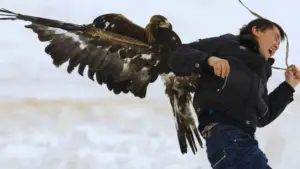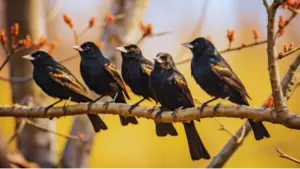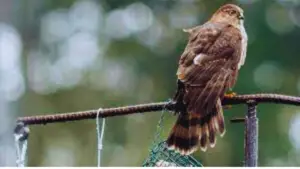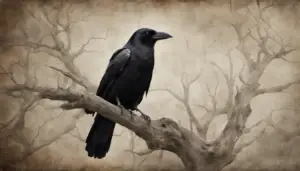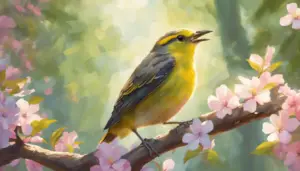Did you know that there are over 10,000 species of birds in the world?
If you’ve ever come across a feather and wondered which bird it belonged to, then this article is for you.
I’ll be sharing some valuable tips on how to identify bird feathers.
We’ll explore the different types of feathers, examine their structure and coloration, and even learn how to use size and shape to determine the species.
Get ready to become a feather detective!
Key Takeaways
- Understanding the types and functions of bird feathers is essential for identifying them.
- Feather structure and coloration can provide valuable clues about the species and lifestyle of a bird.
- Feather patterns and markings, such as stripes, spots, and wing patches, can help distinguish different bird species.
- Using size and shape, along with other characteristics, can narrow down the possibilities for identifying a bird species based on its feathers.
Understanding the Types of Bird Feathers
I can explain the different types of bird feathers.
Feathers aren’t just for flying; they serve various functions. Let me take you on an intimate journey into the fascinating world of bird feathers.
Firstly, there are contour feathers, which provide the shape and coloration of a bird’s body. These feathers are sleek and streamline, allowing for efficient flight.
Then, we’ve got down feathers, which are soft and fluffy, providing excellent insulation and keeping birds warm. They’re like cozy blankets, protecting our feathered friends from the cold.
Lastly, there are special feathers called flight feathers. These are the strong and sturdy feathers found on a bird’s wings and tail. They enable birds to soar through the sky with grace and precision.
Understanding the different types of bird feathers helps us appreciate the incredible adaptations of these magnificent creatures.
Examining Feather Structure and Coloration
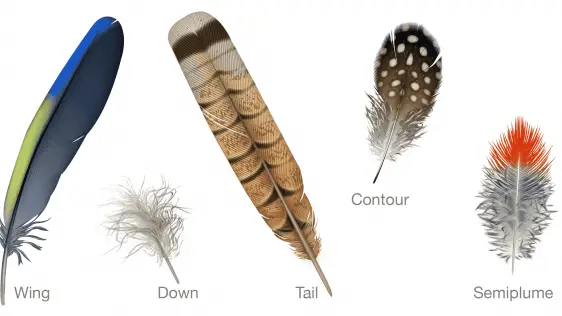
When examining bird feathers, it’s important to pay attention to their structure and coloration. The structure of a feather can reveal important information about the bird’s species and lifestyle. Feathers can be classified into different types, such as contour feathers, down feathers, and flight feathers.
Contour feathers are the ones we usually see on a bird’s body, providing shape and protection. Down feathers are soft and fluffy, providing insulation and warmth. Flight feathers are specialized for flight, with strong and rigid shafts.
In addition to structure, coloration is another key feature to consider. Feathers can come in a variety of colors and patterns, which can help with identification. Brightly colored feathers may indicate a male bird attracting mates, while camouflaged feathers can help a bird blend into its environment.
Identifying Feather Patterns and Markings
Examining feather patterns and markings can provide valuable clues for identifying different bird species. When closely studying feathers, I’ve discovered that the unique patterns and markings on each feather can be like a secret code, revealing the identity of the bird. Here are some key features to look out for:
- Stripes or bars: Some feathers may display distinctive stripes or bars across their surface, which can vary in color and thickness.
- Spots or dots: Certain feathers may have spots or dots, which can be concentrated in specific areas or scattered randomly.
- Eyebrow or eye-ring markings: These markings resemble eyebrows or circles around the eyes and can be helpful in distinguishing between species.
- Wing patches: Look for patches of color on the wings, which can range from bold and contrasting to subtle and blended.
- Tail feather patterns: The patterns on tail feathers can vary greatly, with some displaying bands, spots, or intricate designs.
Using Size and Shape to Determine Bird Species
As I examine the various bird feathers, I can use their size and shape to determine the species. By comparing the measurements and overall structure of a feather, I can narrow down the possibilities and make an educated guess about the bird it belongs to. For example, if a feather is small and rounded, it is likely from a small bird such as a sparrow or finch. On the other hand, if a feather is large and pointed, it may belong to a bird of prey like an eagle or hawk. To help you understand the relationship between size, shape, and bird species, here is a table highlighting some common feather characteristics:
| Feather Size | Feather Shape | Possible Bird Species |
|---|---|---|
| Small | Rounded | Sparrow, Finch |
| Medium | Pointed | Robin, Blue Jay |
| Large | Forked | Eagle, Hawk |
Researching and Consulting Field Guides for Feather Identification
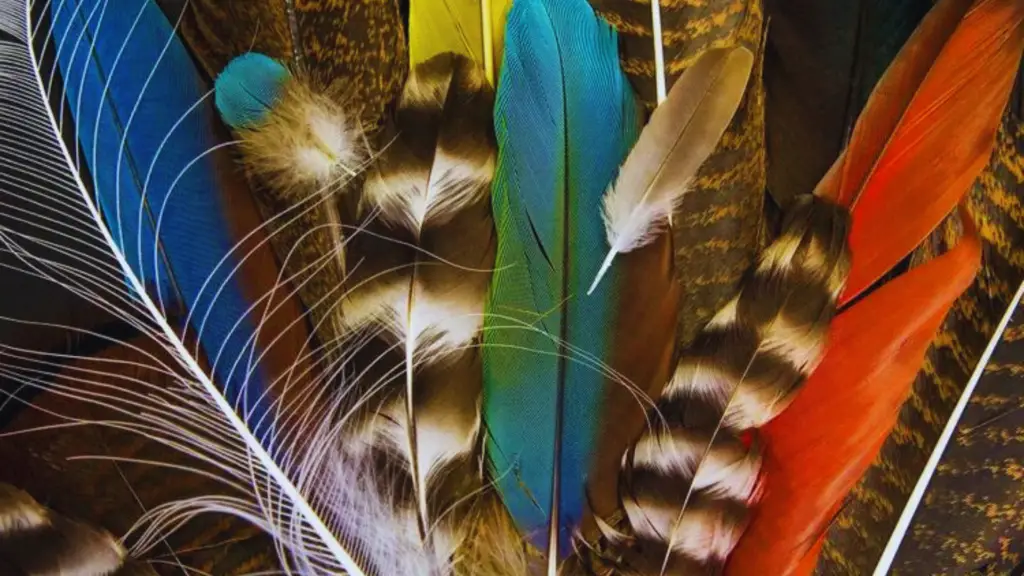
I frequently consult field guides when researching and identifying bird feathers. They’re an invaluable resource that provides detailed information about different bird species and their feathers. Here are some reasons why I find field guides so helpful:
- They contain beautiful illustrations and photographs of bird feathers, making it easier to compare and identify different species.
- Field guides often include descriptions of the color patterns, markings, and texture of feathers, allowing me to make accurate identifications.
- They provide information on the habitat, behavior, and migration patterns of birds, which can further assist in feather identification.
- Field guides also offer tips and techniques for feather collection and preservation, ensuring that I can properly document my findings.
- Finally, field guides often include maps and distribution charts, helping me determine the likelihood of finding a specific bird species in my area.
Using field guides enhances my ability to research and identify bird feathers, making the experience both educational and fulfilling.
The Feathered Arsenal – Various Types of Bird Feathers
Feathers come in a dazzling array of types, each serving a distinct purpose. Let’s explore these fascinating categories:
Wing Feathers
Wing feathers, also known as remiges, are the powerhouses of avian flight. They are firmly attached to both bone and skin, equipped with robust ligaments that enable birds to take to the skies with grace. Primary wing feathers, situated on the outer edge of the wing, are crucial for precision flight control, while secondary wing feathers provide lift and stability during flight.
Tail Feathers
Tail feathers, or retrices, come in six pairs and are primarily responsible for steering during flight. Only the two longest tail feathers are attached to the bone structure via ligaments, forming a fan shape that optimizes streamlined flight.
Contour Feathers
Contour feathers blanket a bird’s body, creating the overall color effect of its plumage. They overlap with one another and also extend to the wings, concealing the areas where primary feathers attach to the bone structure.
Semiplumes
Often hidden beneath the surface, semiplumes provide an insulating layer, contributing to a bird’s temperature regulation.
Down Feathers
Situated closest to a bird’s skin, down feathers are short and fluffy, offering warmth and insulation in various environmental conditions.
Bristles
Bristles are short, stiff feathers located around a bird’s eyes, providing protection for this vital sensory organ.
Filoplumes
Found underneath the wings and body, filoplumes serve as sensory receptors, helping birds monitor the position of contour feathers and respond to atmospheric conditions.
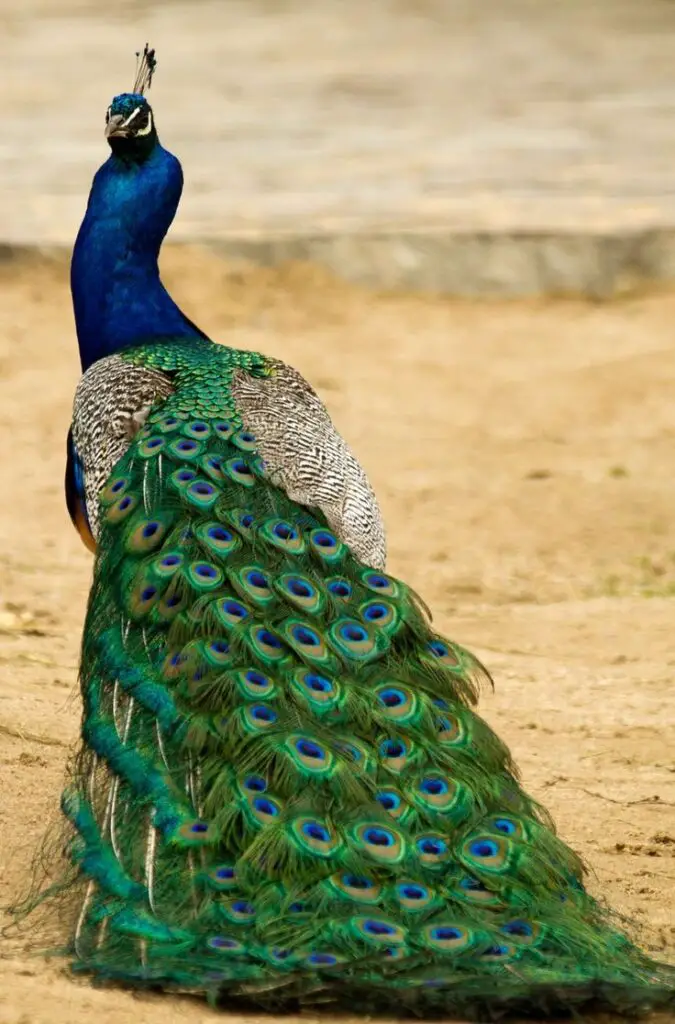
The Functionality of Feathers
Feathers are not merely adornments; they are crucial for a bird’s survival. Here are the primary functions of feathers:
- Thermoregulation: Feathers play a pivotal role in regulating a bird’s body temperature. In cold weather, birds fluff up their feathers to trap air, preserving body heat. In warmer conditions, they rearrange their feathers to release heat, keeping their temperature manageable.
- Water-Resistance: The water-resistant coating on feathers keeps birds dry and warm even in wet weather.
- Flight: Feathers are essential for achieving flight, enabling birds to soar through the skies.
- Mate Attraction: The vivid plumage of male birds during the breeding season increases their chances of finding a mate.
- Camouflage: Some birds rely on their plumage to blend seamlessly with their surroundings, making it challenging for predators to spot them.
- Protection: Feathers shield a bird’s delicate skin, acting as a natural barrier against injury.
Birds in Their Infancy – The Development of Feathers
Birds do not hatch with feathers; their appearance evolves rapidly during their early weeks and months. Altricial birds are born largely featherless, with only tufts of down. As days pass, pin feathers emerge beneath the down, eventually growing into their first set of flight feathers. In contrast, precocial birds are born with dense down, ready to walk, run, and sometimes swim shortly after hatching. However, it takes several weeks for their feathers to fully support flight.
Feather Care – Preening and Maintenance
Birds dedicate several hours daily to preen their feathers. Using their beaks, they groom themselves, ensuring their plumage is in optimal condition. A bird’s uropygial gland secretes oil at the base of its tail, which is spread across feathers, providing waterproofing and protection. Birds use additional grooming techniques like dust baths and water baths to keep their feathers healthy and clean.
The Annual Renewal – Molting
Molting is a natural phase in a bird’s life during which old, worn-out feathers are shed and replaced with new ones. The frequency of molting varies between species, with some undergoing this process once a year while others molt more frequently. Feathers are primarily composed of keratin, which becomes weakened through regular flight and encounters with the environment. During molting, birds may appear shabby and patchy as new feathers grow in to replace the old ones.
The Colorful Palette – The Significance of Vibrant Feathers
Colorful feathers serve several purposes in the avian world. Male birds often rely on their vivid plumage to attract mates during the breeding season. Later in the year, some species, such as certain ducks, migrate to molting grounds, shedding their vibrant plumage for a duller set of feathers. Vibrant feathers can also act as a deterrent to potential predators.
The Feather Count
The number of feathers a bird possesses varies from species to species. Hummingbirds, known for their diminutive size, boast the fewest feathers, with approximately 1,000 on a typical adult. In contrast, Tundra swans flaunt over 25,000 feathers, while penguins have the densest coverage, with up to 15 feathers per square centimeter, a remarkable 100 per square inch. One Emperor penguin has even been recorded with a staggering 80,000 feathers!
How to Identify Bird Feathers: FAQs
How Can I Tell the Age of a Bird Based on Its Feathers?
Based on the feathers, the age of a bird can be determined by looking at its condition and coloration. Younger birds often have softer feathers and may have different markings or patterns.
Are There Any Specific Feathers That Are Unique to a Particular Bird Species?
There’s something fascinating about bird feathers. Did you know that certain species have unique feathers? They serve as a distinctive mark, helping us identify them. It’s like a secret code nature has designed.
Can Bird Feathers Change Color or Pattern Over Time?
Yes, bird feathers can change color or pattern over time. This can be due to a variety of factors such as molting, aging, or environmental conditions. It’s fascinating to see how feathers can transform!
Are There Any Common Parasites or Diseases That Affect Bird Feathers?
There are common parasites and diseases that can affect bird feathers. They can cause feather loss, discoloration, or damage. It’s important to monitor our feathered friends for any signs of illness or infestation.
What Are Some Alternative Methods to Identify Birds if Feather Identification Is Not Possible?
If you can’t identify birds by their feathers, there are other methods to try. You can listen to their calls, observe their behavior, or use binoculars to study their physical features.
Conclusion
In conclusion, identifying bird feathers can be a challenging but rewarding endeavor.
By understanding the different types of feathers, examining their structure and coloration, and recognizing patterns and markings, one can gain valuable insights into the species of bird they belong to.
Additionally, considering the size and shape of feathers can further aid in identification.
It’s also beneficial to consult field guides and conduct further research to enhance one’s knowledge in this fascinating field.



